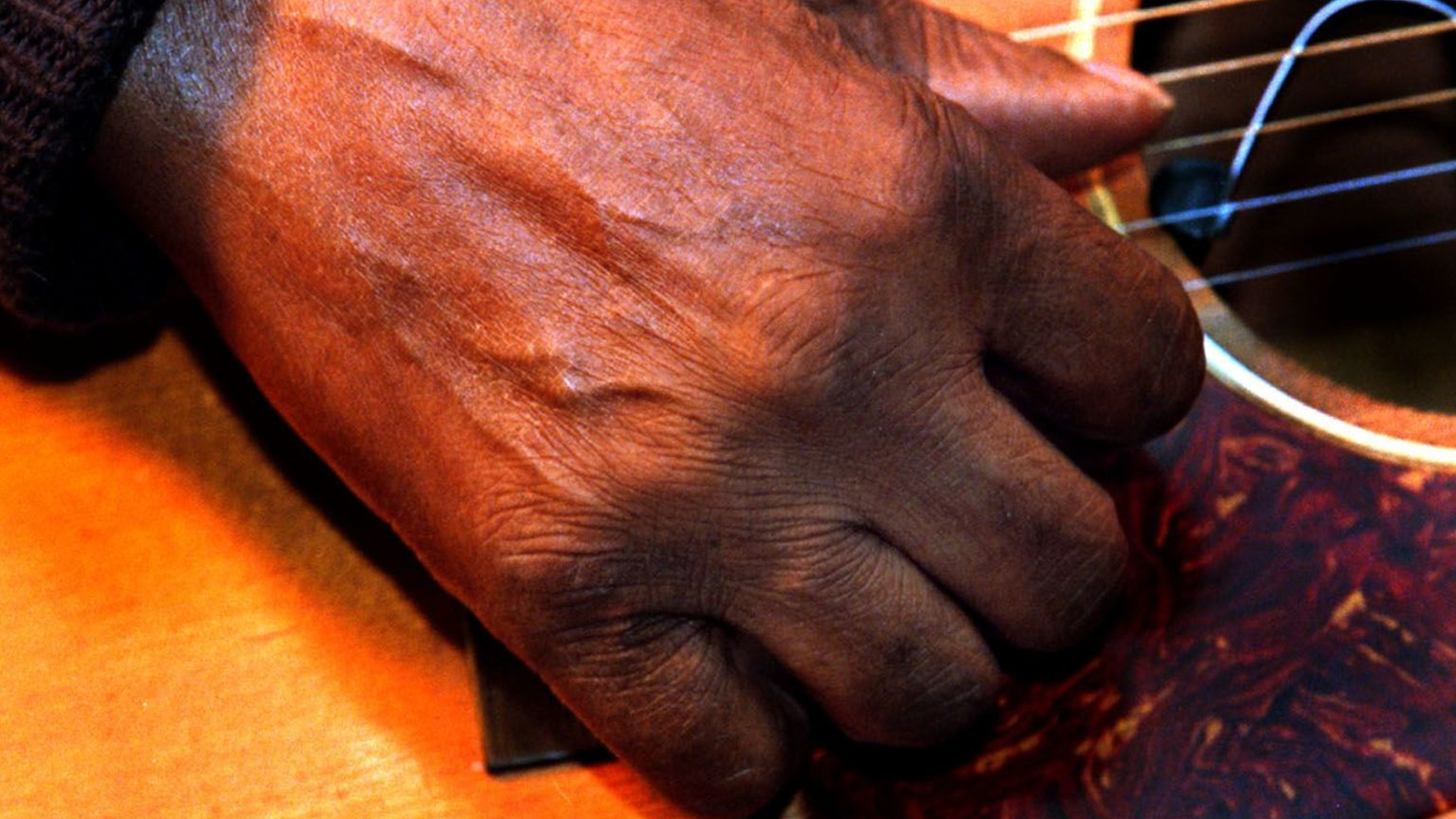How to Ditch the Pick and Engage Your Strongest Digits for Powerful Fingerstyle Action
Get inspired and expand your technique using this short lesson

The glorious fingerstyle acoustic guitar galaxy is a world away from playing with a pick, or even hybrid picking, because the powerful thumb and index finger are now available as primary pluckers.
New learning curves lie around every corner, but the immediate goal is to use the thumb or index fingernail like a plectrum to strum a chord or pluck a succession of single notes as we work toward tackling multi-digit picking patterns.
Hang Loose
A fingerstylist may approach the strings from wildly different angles at times, but there’s always some root position.
Your own “hand hang” boils down to what feels most comfortable in your primary style. For example, a classical hand approaches the strings from a practically perpendicular angle, whereas it’s nearly parallel in a traditional folk approach.
Most of us wind up striking a balance between the two, and that’s what we’ll focus on here. Keep a relaxed feel all the way up through your shoulders. A stiff body equals stiff music.
Examine the Angle of the Dangle
For those who are new to extended or fake nails, first decide what shape you need, then examine the plucking angle.
I find the most natural plucking feel comes from a standard teardrop nail shape that extends a short way beyond the fingertips, and is perhaps slightly longer on the first three digits, as they do most of the heavy lifting. Interestingly, the pointer fingernail works quite well for ripping off single-note runs.
All the latest guitar news, interviews, lessons, reviews, deals and more, direct to your inbox!
The trick to a strong yet fast-flowing attack lies in the angle of the dangle. Approaching a string from the side yields a brushy, soft attack. A steep hand angle leads to classical territory, where plucking upward happens readily, but not much else does.
How to Pick and Strum with Your Pointer Fingernail
For a versatile approach, pretend to hold a small pick between your thumb and index finger. Now move the thumb upward and press it against the outside of the index finger so that the thumb tucks in at the first joint.
Use the pointer fingernail to attack the strings at about a 45-degree angle, swiping away from your body on the downstroke and returning along the same path for an upstroke or non-stroke. Use a tight motion for single notes and a larger swipe for strumming, as if you’re shaking a drop of water off the hand.
Once you’re accustomed to it, this technique feels similar to picking and strumming with a plectrum. The attack is slightly different, but a happy medium can be found, so experiment. The index fingernail attack will be quite strong once you learn how to make the most of the nail’s edge, which is why a good file job is crucial.
Utilize the far edge on the downstroke and the closer edge on the upstroke. You can always modify into a straight up-and-down motion to emphasize a particular part. Need more torque? The thumbnail is the most powerful.
Thumb it Down
For a robust pluck or strum, rotate the hand toward the neck a bit, and anchor it with the fingers on the far side of the sound hole so that the thumb is free to flow straight up and down.
The thumbnail downstroke is now at your service to strum chords or pluck single-note passages with gusto, as long as the tempo isn’t so fast as to require upstrokes. That’s a difficult discipline bass players refer to as “double thumbing,” and it’s mostly a fleshy affair involving no significant nail length.
Utilize a more traditional hand angle to use the thumb as a foundation for multi-string plucking patterns. The key is getting a good “hook” with the outside of the thumbnail for a strong attack that can be released quickly as it moves on to the next task.
The thumb is awesome for an array of fingerstyle applications. Read this article to learn how to make the most of it.
Jimmy Leslie is the former editor of Gig magazine and has more than 20 years of experience writing stories and coordinating GP Presents events for Guitar Player including the past decade acting as Frets acoustic editor. He’s worked with myriad guitar greats spanning generations and styles including Carlos Santana, Jack White, Samantha Fish, Leo Kottke, Tommy Emmanuel, Kaki King and Julian Lage. Jimmy has a side hustle serving as soundtrack sensei at the cruising lifestyle publication Latitudes and Attitudes. See Leslie’s many Guitar Player- and Frets-related videos on his YouTube channel, dig his Allman Brothers tribute at allmondbrothers.com, and check out his acoustic/electric modern classic rock artistry at at spirithustler.com. Visit the hub of his many adventures at jimmyleslie.com
